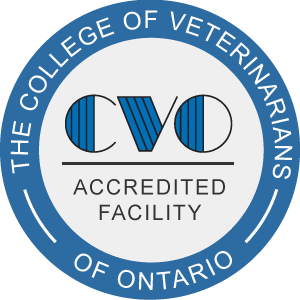Illustrated Articles
-
Ciprofloxacin is a systemic fluoroquinolone antibiotic used to treat bacterial infections. It is often given by mouth, but an injectable form is also available. The most common side effect is gastrointestinal distress, but other side effects are possible. It is contraindicated in young or dehydrated pets, or in pets with liver or kidney disease. It should not be the first-choice fluoroquinolone for veterinary patients.
-
Cirnechi are friendly, affectionate, and loyal – but they're also independent and incredibly intelligent. Although they're only moderate energy dogs, they need plenty of mental stimulation in order to be happy.
-
Cisapride is used in small animals to stimulate intestinal contractions, and to treat chronic constipation or other conditions where food and waste materials have stopped moving through the gastrointestinal tract. This medication also speeds up the time taken to empty the stomach.
-
Cisplatin is a chemotherapy drug used to treat various forms of cancer and solid tumors in animals. It is prescribed off-label for use in dogs, horses, birds, and reptiles. It should not be used in cats due to potentially fatal side effects. Cisplatin is administered by injection, typically IV into the vein, by trained veterinary staff.
-
Clarithromycin is given by mouth and used off label to treat certain bacterial infections in several animal species. Do not use in pets that are allergic to it or other macrolide antibiotics, in rabbits, gerbils, guinea pigs, hamsters, or horses more than four months old.
-
Clindamycin is an antibiotic used to treat a range of bacterial infections in dogs and cats. It is often used to treat wounds, pyoderma, abscesses, bone and dental infections, and toxoplasmosis. Its use to treat certain infections, such as toxoplasmosis, is ‘off label’ or ‘extra-label’. Clindamycin is available in an oral liquid, tablets, and capsules. It has a very bitter taste, so you may need to disguise the medication in food. It is important to never dry pill a cat if using capsules or tablets as esophagitis can occur. If you suspect an overdose or an adverse reaction to the medication, call your veterinary office immediately.
-
Clindamycin topical (brand names ClinzGard®, others) is an antimicrobial used to treat bacterial skin infections, acne, anal sac abscesses, and other wounds in cats and dogs. Clindamycin topical comes in variety of forms.
-
Clomipramine is given by mouth and is used on and off label to treat behavior disorders such as obsessive-compulsive disorders, anxiety, aggression, and urine marking. In cats, it is used for urine spraying, and in birds, it is used to treat feather picking.
-
Clonazepam is given by mouth and is used off label to treat seizures and certain behavioral disorders in dogs and cats. Common side effects include sleepiness, incoordination, drooling, excitement, or increased appetite.
-
Clonidine is a medication that is used to treat behavioral disorders in dogs, particularly anxiety or phobia-related. Give as directed. Side effects are generally mild if present and include sedation, lethargy, agitation/excitation, aggression, and constipation. Monitoring blood pressure as well as heart rate and rhythm is recommended with chronic use. If you suspect an overdose or an adverse reaction to the medication, call your veterinary office immediately.


